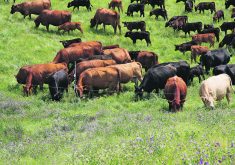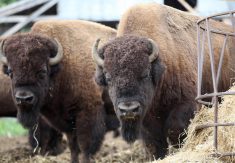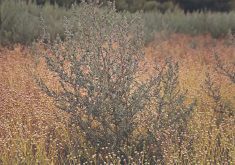Bunge’s merger confidence questioned
So Bunge’s Daiana Endruseit believes, “based on what we know, we expect the transaction to be concluded in coming months.” Re: Bunge waits for merger decision, page 3, Aug. 22, issue.
Am I the only person who finds this merger proposal comment more than a little disturbing? Is Endruseit a clairvoyant? Is she spit-balling for the media, hoping to make Bunge’s unconvincing claim — that Western Canada’s grain industry will be the same after merger, only better — seem inevitable?
Read Also

High prices see cow-calf producers rushing to incorporate
Farm accountants are reporting a steady stream of cow-calf producers rushing to get their operations incorporated ahead of selling their calves this fall.
Or does she actually have inside information from Transport Canada, the Competition Bureau or the Privy Council indicating farmer and consumer opposition to this combination will be brushed aside? If so, she should clearly state that her firm has inside information unavailable to opponents so this shocking breach can be addressed.
If not, she and her transnational employer will just have wait like the rest of us to see what Ottawa decides.
Bunge’s arguments in favour of this ritual marriage of assets have largely consisted of hectoring admonishments that Bunge and Viterra are big, BIG, and merger will make them bigger.
These claims do not a convincing competition case make, and do nothing to counter the 42-page argument offered by the University of Saskatchewan’s Gray, Nolan and Slade this spring that farmers could be on the hook for an additional $770 million a year in additional export basis and crush margins if the deal is approved.
If Bunge really wants to counter popular mistrust of its proposal, it should commission its own experts and publicly make the case that its proposed $25 billion merger will not trigger the “substantial anti-competitive effects” predicted by the Competition Bureau.
Until then, Gray, Nolan and Slade’s highly negative projections will remain the more convincing.
Bruce Dodds
Benito, Man.
Ergot caused by copper deficiency
In the Aug. 22 issue on page 24 of the Western Producer, there is a write-up called, “Ergot risk threatens Manitoba.” The information supplied to the writer on the cause of ergot is some 35 years out of date.
Ergot infection of wheat, barley or oats is not caused by prolonged flowering during cool wet weather. Ergot infection in these three cereals is plain and simply caused by a deficiency of copper. There are many articles on this topic on the internet, including a YouTube by myself.
Every time a crop of grain or forage is removed from cropland, copper, zinc, boron and other micronutrients are being removed in ounces per acre. Over time, our soils become deficient in these microminerals such as zinc, boron, copper or molybdenum deficiency, causing major crop losses.
Wet summers result in shallow rooting of cereal crops, where the copper availability is most deficient. The result can be severe lodging since copper is involved in stem lignin formation and ergot infection.
Lack of soil-available copper results in pollen sterility in wheat, barley and oats. This causes the normally closed flower to open and “look for” stray pollen, which ends up as blanks or results in ergot infection. Rye and to some extent triticale have open pollinated flowers and are always susceptible to ergot infections.
In dry summers, cereal roots go deep into the soil at two to four feet, where there is usually sufficient available micronutrients, hence no lodging or ergot as in the case of copper.
In Alberta, growers on sandy or peaty soils have had huge crop yield increases with copper applications as well as speeding up crop maturity by up to 10 days to two weeks.
Ergot infection in wheat, barley and oats is your “canary in the coal mine.”
For 10 years at Edmonton, colleagues and I would infest wheat, barley, oats, rye and triticale demonstrate plots with handfuls of ergot each fall prior to spring planting. In the plot areas, the copper levels were greater than three p.p.m. and we never saw any ergot infection in the wheat, barley or oats, occasionally ergot in the triticale and always heavy ergot infection in the open pollinated rye.
Ieuan R. Evans
forensic plant pathologist
Edmonton














